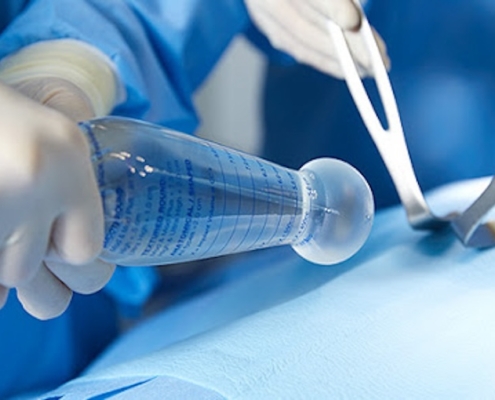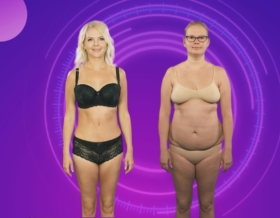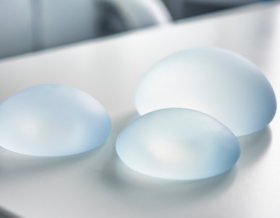 https://www.christinasclinic.ee/wp-content/uploads/Mia-Femtech-rindade-suurendamine-Christinas-Clinic.png
806
1551
cc
https://www.christinasclinic.ee/wp-content/uploads/Christinas-Clinic-LOGO.png
cc2025-06-25 12:35:242025-06-25 12:36:48Mia Femtech™ – a new era of breast aesthetics at Christinas Clinic
https://www.christinasclinic.ee/wp-content/uploads/Mia-Femtech-rindade-suurendamine-Christinas-Clinic.png
806
1551
cc
https://www.christinasclinic.ee/wp-content/uploads/Christinas-Clinic-LOGO.png
cc2025-06-25 12:35:242025-06-25 12:36:48Mia Femtech™ – a new era of breast aesthetics at Christinas ClinicPossible complications after breast augmentation if proper bra support is not worn
Breast augmentation is a popular cosmetic surgery, but its success largely depends on proper aftercare. One often underestimated but critical aspect of this care is wearing the right bra. Failing to follow this guidance can lead to various complications that affect both aesthetic results and overall health.
1. Implant Displacement
One of the biggest risks of not wearing a bra after breast augmentation is implant displacement. The implant is placed in a pocket created for it, where it should settle during recovery and later be supported throughout life to prevent deformation of the surrounding tissues. Without adequate support, tissues stretch, often along with the pocket surrounding the implant, creating free space around the implants. This movement, especially downward, can cause a condition known as “bottoming out,” where the implant drops below the natural breast fold, leading to a distorted appearance. In more severe cases, implants can shift laterally (to the side) or rotate upward, making the breast shape uneven or unnatural.
Correcting implant displacement often requires revision surgery, which can be costly and extend the recovery period.
2. Capsular Contracture
Capsular contracture can also develop if a supportive bra is not worn. After breast augmentation, the body naturally forms a layer of scar tissue around the implant, called a capsule. In some cases, this scar tissue can tighten excessively, causing the implant to harden and create discomfort or pain. Wearing a bra that provides necessary support helps minimize excess movement and tension on the implants, reducing the risk of capsular contracture.
If capsular contracture occurs, the breasts may feel hard or appear distorted. This condition is often painful and usually requires surgical intervention.
3. Skin Stretching and Breast Sagging
Breast implants add weight to the breasts, and without bra support, the skin and surrounding tissue can deform. Over time, the skin can stretch, leading to premature sagging. This is especially common with larger implants, implants placed above the muscle, or individuals with weaker tissue elasticity.
Once the skin has stretched, it may not return to its original firmness, leading to sagging breasts that may require a breast lift. Wearing a well-fitted bra helps distribute the weight of the implants evenly, preventing excessive stress on the skin.
4. Worsening of Scars
After breast augmentation, the body needs time to heal the incisions. A well-fitting postoperative bra keeps the area stable, minimizing movement and reducing tension on the stitches, promoting normal healing. Without a bra, the breasts are in constant motion, which can stretch the stitches and cause repeated trauma to the wound/scar area, leading to excessive scar tissue formation and wider or thicker scars. Poorly healed scars not only affect aesthetic results but can also increase the risk of infection or other complications related to poor wound healing.
5. Increased Swelling, Hematoma/Seroma Formation, and Discomfort
Although rare, hematomas (blood collections) and seromas (fluid accumulation) can develop after breast augmentation, particularly if the recovery process is not carefully monitored. A supportive bra helps control blood flow and swelling in the chest area, reducing the risk of these complications. Without proper compression, excess fluid accumulation may require drainage or additional medical intervention.
A postoperative bra is specifically designed to help control swelling and provide comfort after breast augmentation. Compression bras help reduce inflammation and prevent fluid accumulation, which is common in the early stages of recovery. Without this compression, swelling may persist longer and cause more discomfort.
Additionally, not wearing a bra means the chest muscles and skin must bear more weight, which can increase pain, especially during movement or physical activity. Prolonged discomfort can interfere with daily life and slow the recovery process.
6. Rippling of Implant Surface and Visible Edges
Rippling of the implant surface is a condition where the edges or folds of the breast implant become visible under the skin, giving the breasts a wrinkled or uneven texture. This is more likely in women with thinner skin or those who do not wear a bra, as the implants are less supported and more prone to shifting. A supportive bra helps keep the implants in place, reducing the likelihood of rippling and ensuring a smoother, more natural appearance.
Which Bra to Choose?
During the postoperative healing period, it is recommended to wear special supportive garments typically provided by the clinic. After the initial recovery, a regular bra can be worn, but it is essential to choose a model that provides sufficient support. Christinas Clinic advises their patients to choose a balcony or balconette bra style and provides their patients with a guide on how to select a bra, which we have also included with today’s article for everyone to consult.

Conclusion
Wearing a bra after breast augmentation is more than just a suggestion; it is a crucial part of the healing process. Not wearing a bra can lead to various complications, such as implant displacement, capsular contracture, premature sagging, worsening of scars, and increased discomfort. These issues not only affect the aesthetic results of the surgery but may also require additional procedures and extend recovery time. To protect your investment and achieve the best results, it is essential to follow the clinic’s aftercare instructions.
Attention! This is a healthcare service. Christinas Clinic is licensed by the Health Board, permit L04361 (CBF Medical OÜ).






















